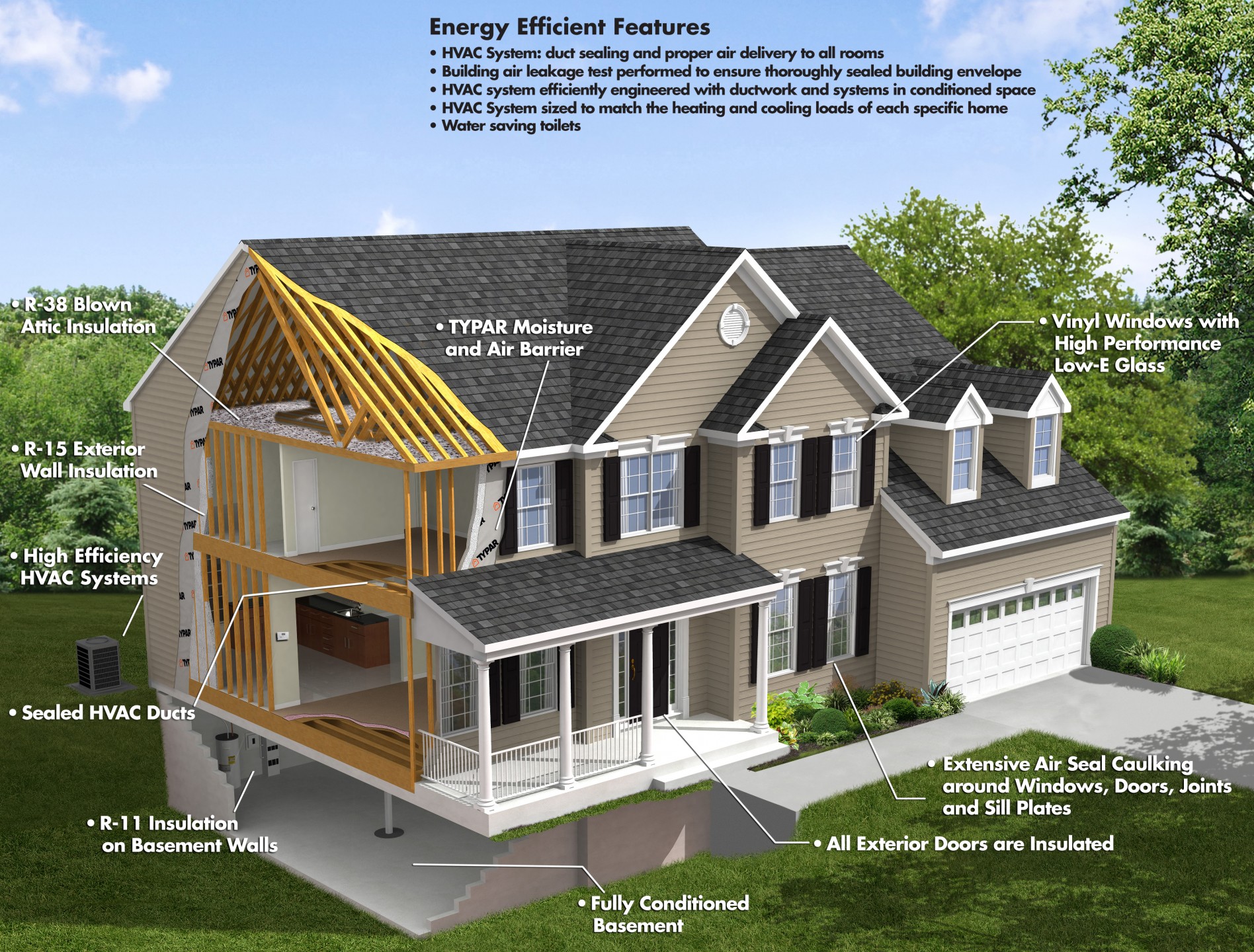Point 6
Energy Efficiency: The Roadmap to a Greener, Cost-effective Home
Evaluating Your Home’s Energy Footprint to Identify Savings and Sustainability Opportunities
Energy efficiency isn’t just a buzzword; it’s an essential criterion for modern living. In a world where energy costs are continually rising and environmental sustainability is more crucial than ever, understanding your home’s energy consumption patterns can make a significant difference. Not only does it reduce your monthly utility bills, but it also decreases your environmental impact. Our comprehensive energy efficiency inspection looks at your home’s insulation, HVAC systems, lighting, and more to identify areas where you can improve energy efficiency, ultimately leading to long-term cost savings and a lower carbon footprint.
Making Your Home an Energy-Efficiency Powerhouse
A Comprehensive Guide to Assessing and Enhancing Energy Use in Your Living Space
Why Energy Efficiency Matters
Energy efficiency is more than a modern luxury; it’s a necessity for environmentally conscious living and financial well-being. By focusing on energy-efficient solutions in your home, you’re not just cutting down on your energy bills; you’re also contributing to a cleaner, greener planet.
Insulation
One of the first points of inspection when it comes to energy efficiency is insulation. Effective insulation keeps your home warm in winter and cool in summer, reducing the need for extra heating or cooling. Insulation levels in the attic, walls, and basements are examined to ensure they meet or exceed current standards. Insufficient insulation can result in substantial energy waste, so this is a critical aspect of any energy-efficiency assessment.
HVAC Systems
Your Heating, Ventilation, and Air Conditioning (HVAC) systems are usually the most energy-consuming aspects of your home. An older or inefficient HVAC system can be a significant drain on energy resources. Our inspection will check the age, condition, and efficiency rating of your HVAC systems and may recommend upgrades or maintenance activities that can lead to energy savings.
Windows and Doors
Poorly sealed windows and doors are another common source of energy waste. Gaps, cracks, and old weatherstripping can allow heat to escape in the winter and let in warm air in the summer, forcing your HVAC system to work harder. The inspection will assess the state of the windows and doors and may recommend replacements or seals.
Appliances and Electronics
While smaller in scale compared to HVAC systems, the cumulative energy consumption of appliances and electronics can be significant. Energy-efficient models, particularly those with ENERGY STAR ratings, can save a considerable amount of energy over their lifetimes. During the inspection, the efficiency of significant appliances like refrigerators, dishwashers, and washing machines will be assessed.
Lighting
Old incandescent bulbs consume much more electricity than LED or CFL bulbs. The inspection will evaluate the types of lighting fixtures in use and recommend more energy-efficient options if needed.
Smart Home Technology
Smart thermostats, lights, and power strips can automate energy savings. They can be programmed to turn off when not in use or adjust themselves based on your habits. Incorporating smart technology is an effective way to manage your home’s energy consumption actively.
Water Heating
Water heating is often another significant energy expense in homes. The inspection will check the age and efficiency of your water heater and may recommend energy-saving options like tankless water heaters or heat pump water heaters.
Renewable Energy
Lastly, the assessment may explore the feasibility of renewable energy sources like solar panels or wind turbines. While the initial investment can be high, the long-term energy savings and environmental benefits make these options increasingly popular.
Final Thoughts
A thorough energy efficiency inspection provides you with a roadmap for making improvements that can result in significant savings and a reduced carbon footprint. It identifies weak links in your home’s energy consumption chain and provides actionable insights for improvement. In an age where every kilowatt-hour counts, optimizing your home’s energy efficiency is a win-win situation for both your wallet and the planet.



